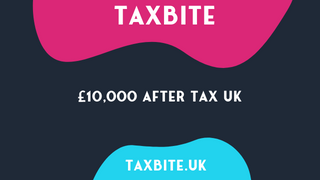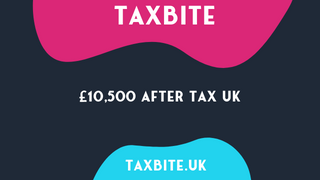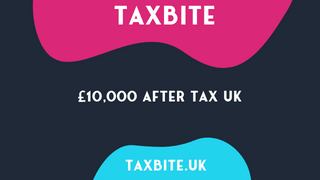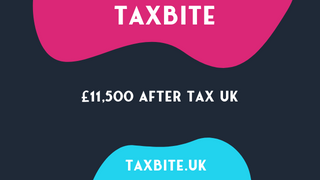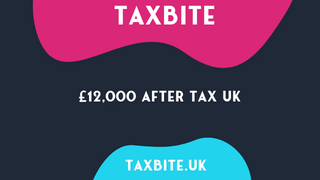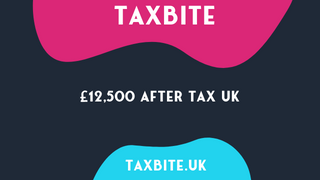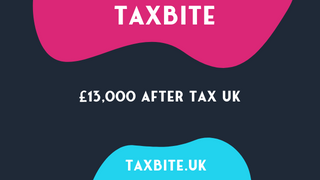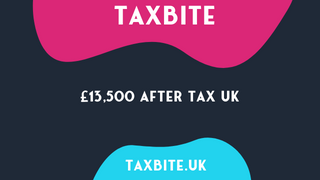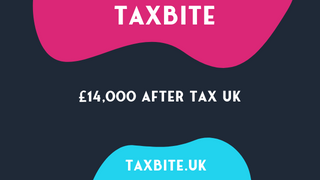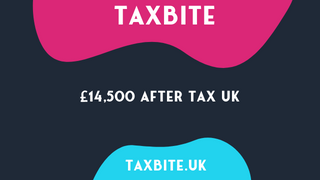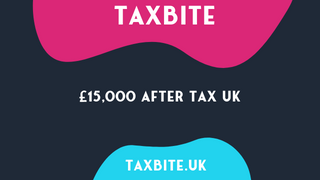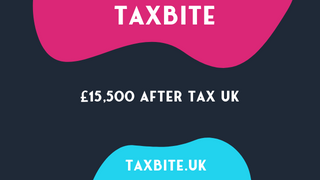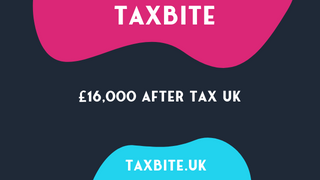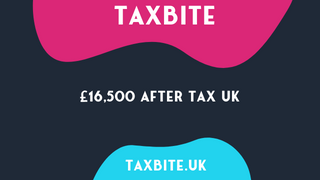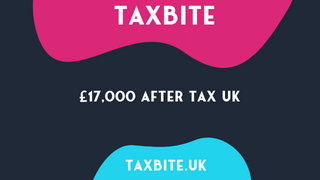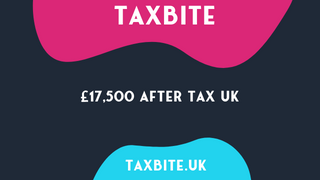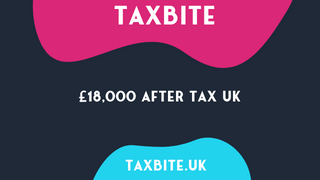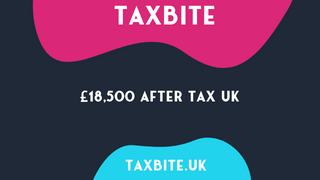If you are a UK resident, it is crucial to comprehend how income tax impacts your take-home pay. This section delves into income tax intricacies, such as how personal allowances and tax rates affect your tax liability. Additionally, we cover how national insurance contributions are computed. By understanding these essential elements of income tax, you can make informed financial decisions and prepare for the future. Let us explore the details of income tax in the UK.
Income Tax in the UK has two significant factors: Personal Allowance and Tax Rates. Everyone has the right to a Personal Allowance; the amount of money they can earn and not pay tax on. For 2021/22, the limit is £12,570. If you make more than that, you will be required to pay Income Tax and this will be progressive. The basic rate is 20% for incomes up to £50,270. The higher rate is 40% for incomes between £50,271 and £150,000. For more income, the top rate is 45%. In addition, National Insurance Contributions may apply. A table of these rates is provided below. It’s important to understand both Personal Allowance and Tax Rates to manage your budget correctly. Before making any financial decisions, it’s wise to consult an expert as the rules about taxation can change.
| Band | Rate | Income range |
|---|---|---|
| Basic rate | 20% | £12,571 to £50,270 |
| Higher rate | 40% | £50,271 to £150,000 |
| Top rate | 45% | over £150,000 |
UK workers must pay National Insurance Contributions as part of their tax. These payments are important. They fund the NHS, state benefits such as Jobseeker’s Allowance and Maternity Pay, and the State Pension. How much you pay depends on your income.
For example, those earning £9,568 to £50,270 per year must pay 12%, plus an extra 2% on anything above this. Those earning under £9,568 do not pay any National Insurance Contributions.
Self-employed workers also have to pay National Insurance Contributions as well as income tax. But, their contribution rates are different. It is essential to understand them, so you can plan your finances and comply with tax rules. Use calculators or get professional help to calculate your net pay and avoid penalties.
Wondering how much of your £14,000 income will fall under the tax net? In this section, we’ll explore the relevant tax calculators to help you calculate your net pay and determine your marginal tax rates for additional income. Whether you’re starting a new job or considering a pay rise, this section is full of insightful figures and statistics sourced from HMRC and other reliable sources, so you can make informed decisions about your finances.
Figuring out your net pay is key for financial planning. Tax calculators are a great way to work out your net pay precisely. They take into account income tax and NI contributions. The calculator works out the gross pay then takes away NI contributions from it. Student loan repayments are also taken into account, if applicable. This gives you your net pay. Make sure to review and amend any assumptions of extra income or deductions. Recalculate using a tax calculator.
Online tax calculators are fast and reliable. Recent years have seen improvement with cloud technology and mobile apps that supply detailed salary estimates based on current regulations.
Income tax rates in the UK vary with the amount of income earned. Marginal Tax Rates for Additional Income mean the % rate payable on each extra £ earned after reaching a certain threshold. As income rises, so does the tax rate.
To clearly understand marginal tax rates for additional income, a chart can be created showing how much tax is paid for each extra £ earned based on different income brackets. For instance, an individual making £14,570 per year will not pay any income tax as their Personal Allowance covers all their earnings. However, if their earnings go up to £20,000 per year, they will be subject to a 20% marginal tax rate for every extra £ earned beyond the Personal Allowance threshold.
The marginal tax rate gradually increases with higher incomes. People earning between £50,271 and £150,000 per year, face a 40% marginal tax rate. Those earning over £150,000 are subject to a 45% marginal tax rate. It’s important to note that these rates only apply to the part of income within each bracket and not the whole income earned.
It’s important to think of marginal tax rates when making financial decisions that may affect your earnings. This includes negotiating salary hikes or taking on extra work. Knowing how much of your earnings will go towards taxes helps you plan your budget well and make smart financial choices.
If you earn £14,000 a year, you may wonder what your take-home pay will be after taxes. In the UK, the basic rate of income tax is 20% on income up to £50,000. Your personal allowance, which is the amount you can earn before paying tax, is currently £12,570. Therefore, if you earn £14,000 a year, your taxable income would be £1,430 (£14,000 – £12,570) and your income tax would be £286 (20% of £1,430). Additionally, if you are a resident in Scotland, you may need to pay the Scottish Income Tax.
After income tax, you may also need to pay National Insurance contributions. The basic rate is 12% on income between £184 and £967 per week. As your annual income is below the lower earnings limit of £6,240, you will not need to pay National Insurance.
Based on the above information, your take-home pay would be approximately £13,714 per year, which comes out to be £1,143 per month, £264 per week and £53 per day. Knowing these figures can help you plan your finances more efficiently.
A breakdown of deductions and net salary for a £14,000 income can be provided. This gives insight into the amount of taxes and contributions taken from an individual’s pay. The following table outlines these deductions:
| Deductions | Amount |
|---|---|
| Personal Allowance | £12,570 |
| Taxable Income | £1,430 |
| Basic Rate Tax (20%) | £286 |
| National Insurance | £108 |
The personal allowance is the amount individuals can earn before paying income tax. In this case, the personal allowance is £12,570, so only £1,430 of the income is taxed. The total tax deducted from the salary would be £286 after adding the basic rate tax of 20%. Plus, national insurance contributions of £108 are also taken.
It is worth noting that these calculations are based on standard factors. Variations may occur depending on individual circumstances, such as pension contributions or student loan repayments. By understanding how taxes and contributions are calculated at a certain income level, individuals can plan their finances and budget for their after-tax take-home pay.
To calculate your net salary each month, week, or day with a £14,000 income in the UK, you can use online tax calculators or do manual calculations. Net salary is the money you get after deductions.
A table shows the expected monthly, weekly, and daily net salary for a £14,000 income:
| Net Pay Calculation | Monthly | Weekly | Daily |
|---|---|---|---|
| Income | £1,166 | £269 | £54 |
| Personal Allowance | £12,570 | ||
| Taxable Income | £1,430 | ||
| Taxed Amount at Basic Rate (20%) | £286 | ||
| Remaining Taxable Income | £0 | ||
| Total Taxes & NI | £308 | ||
| Net Pay after Taxes & NI | £858 | £198 | £40 |
Remember, this calculation does not include other deductions such as pension contributions or student loan repayments.
For future financial years, tax obligations may change due to adjustments in income and contributions. It’s important to stay informed about tax legislation changes. Use resources like HM Revenue & Customs and Money Advice Service for up-to-date information on tax codes, allowances, and income thresholds. With this knowledge, you can make informed financial decisions.
Trying to calculate your take-home pay after taxes can be a daunting task. In this article, we’ll examine some of the factors that can affect your tax calculation. By adjusting your income and contributions, you can impact the final sum. However, it’s important to be aware of the limitations of using HMRC’s standard calculation factors. Armed with this knowledge, you’ll be better equipped to navigate the complexities of the tax system.
When it comes to income tax in the UK, changes to income and contributions can have a major effect on tax payments. Reducing taxable income by deductions or increasing contributions can lessen the total amount of tax due. Check out this income tax calculator to see how earning £14,000 after tax in 2023 can affect your tax payments.
There are various methods of adjusting income and contributions, such as making charitable donations or investing in a pension scheme. This could lead to tax relief.
Though, it’s essential to remember some tax breaks and deductions may have rules and limits. For example, only donations to eligible charities registered with HMRC can give tax relief. Also, there are boundaries on how much you can contribute to a pension plan per year before paying extra taxes.
Moreover, changing income and contributions may not be the right financial decision. Sacrificing too much money to retirement savings can leave you with less for present expenses.
To sum up, knowing how to adjust income and contributions is important for tax management. By using correct data and making educated decisions, you can decrease the amount of money to pay to HMRC.
Calculating income tax in the UK requires thought. The personal allowance and tax rates used for standard calculations might not work for everyone.
For example, freelance workers with fluctuating incomes can’t rely on these standard calculations. Certain deductions or allowances may not apply to them.
Individuals must understand these limitations and make changes. This could include getting advice from a tax expert or using different calculation methods.
A freelance writer found they got less net pay than expected. This was due to an error in their personal allowance calculation. They changed their approach and got help from a professional. This improved their financial planning and prevented future mistakes.
Tax rules are a key part of money management. In 2023, one can make £14,000 before tax. But, tax duties vary depending on income, deductions, and allowances. So, it’s important to consider individual circumstances when making financial decisions.
Knowing taxes is critical to money matters. Taxes can lower returns from investments. It’s important to understand how taxes affect investments. For instance, marginal tax rate decides tax liability on interest from investments like bonds.
To sum up, understanding tax obligations is essential for financial planning. Account for personal circumstances, be up-to-date with taxes, and recognize the effect taxes have on investments. The £14,000 figure after tax in 2023 is useful when making financial plans.
The personal allowance remains at £12,570 in the 2023-24 tax year. Income between £12,571 and £50,270 is taxed at 20% (basic rate). Income between £50,271 and £125,140 is taxed at 40% (higher rate). Income above £125,140 is taxed at 45% (additional rate).
The average tax rate for a yearly income of £14,000 in the UK is 3.4%. The marginal tax rate is 33.3%, which means that any additional income will be taxed at this rate.
After tax deductions on a yearly salary of £14,000 in the UK, the net income expected is £13,168.10 per year or £1,097 per month. The breakdown of earnings is: Gross Income: £14,000, Pension Deductions: £0, Childcare Vouchers: £0, Taxable Income: £1,430, Tax: £286, National Insurance: £545.90, Student Loan: £0, Take Home Net Salary: £13,168.10.
Websites such as gov.uk, uk.talent.com, which.co.uk, reed.co.uk, and netsalarycalculator.co.uk offer tax calculators for people earning a salary of £14,000 in the UK.
Yes, some tax calculators such as income-tax.co.uk offer options to adjust income or add pension contributions and childcare vouchers for a yearly income of £14,000 in the UK.
Here’s a list of similar salaries:
